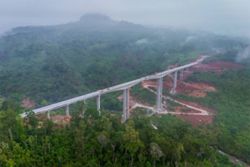
Germany's fastest supercomputer JUWELS at Forschungszentrum Jülich, which is funded in equal parts by the Federal Ministry of Education and Research (BMBF) and the Ministry of Culture and Science of the State of North Rhine-Westphalia (MKW NRW) via the Gauss Centre for Supercomputing (GCS). — Forschungszentrum Jülich/Sascha Kreklau
LONDON: When Storm Ruby hit Sunford City in England's low-lying East Anglia region, elderly resident Arthur was trapped at home alone as floodwater seeped into his basement and his power cut out. He could not reach his grandson Jack for help because the phone network was down too.
Fortunately, the storm, the city and the people involved are all fictional, made up for a pilot programme that uses virtual duplicates of physical assets, allowing scientists to simulate climate change impacts using artificial intelligence (AI).
Save 30% and win Bosch appliances! More Info










































